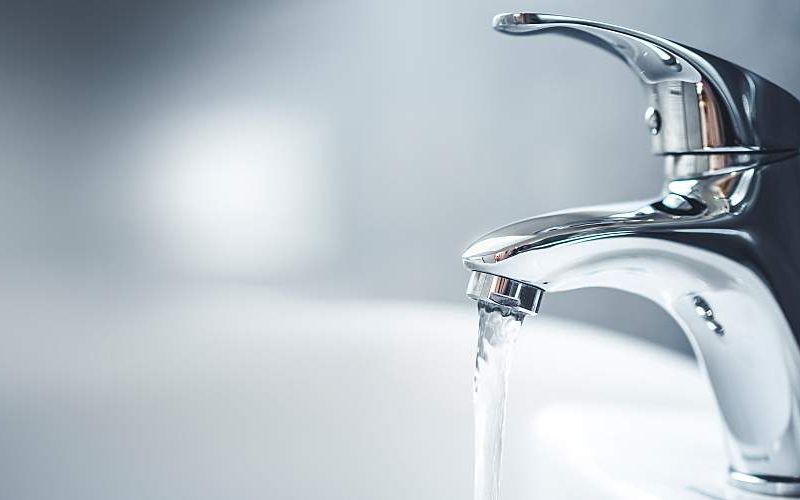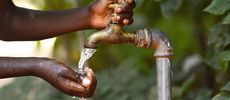Legionnaires' Disease in Household Water Systems: Are We Monitoring Enough?


The taps and shower heads we use each day have an underestimated potential to harbor infectious disease bacteria, according to an analysis of existing studies of opportunistic premise plumbing pathogens (OPPPs), by researchers at Australia's Flinders University. Among these diseases is Legionnaires' disease, which can lead to severe and flu-like symptoms such as headaches, chills, fever, shortness of breath, and nausea.
Microorganisms in domestic water systems also present an elevated health risk for immune-compromised individuals who receive health care at home, the Flinders team pointed out. In the study, published in Water in April 2022, the team concluded that we can more effectively remediate and control waterborne illnesses by better defining characteristics for pathogens beyond Legionnaires' disease and a few other known organisms. It's also necessary to do more testing of water from taps and other domestic systems.
The researchers stated, "It is critical that, as at-home healthcare services continue to be promoted, we understand the emergent risks that are posed by OPPPs in residential drinking water."
Here's a deeper dive into the risks presented in the study and how they can be prevented.
Known Contaminants in Household Water
Recognized OPPPs include several that can cause infections in respiratory systems, blood, and other areas of the human body. The team reviewed studies regarding Mycobacteria spp. and Legionella pneumophila, among several other known OPPPs in residential drinking water systems. All of the OPPPs researched cause short or long-term ailments that can affect people exposed to the water containing the OPPPs.
Legionnaires' disease, specifically, is the only OPPP-caused illness that is nationally notifiable. In 2018, the CDC reported an estimated 10,000 cases, but experts suspect there are significantly more cases—up to 2.7 times what's documented.
How They Reviewed
The Flinders team reviewed 214 papers from across the globe, which included samples from private homes, and public facilities, like schools. The designated OPPPs were identified in a wide range of taps and tap components. Those included handles and aerators, shower heads and hoses, potable water samples, hot water systems, drain holes, baths, ice and ice machines, and sink surfaces. One study, for example, analyzed ice cubes at homes and food service businesses to find 31 different species, with the majority being OPPPs.
The team also compared studies to analyze the effectiveness of reducing microbial loads in drinking water with a single water quality control measure versus using multiple control methods.
Antimicrobial Resistance Plays a Role
Multiple pathogens in the studies, including Mycobacteria spp., can cause potentially contagious and antimicrobial-resistant infections such as pneumonia, sepsis, and skin infection. Several reviewed studies found at least one antimicrobial-resistant pathogen in taps, water, and showers.
The reviewers also gathered that total chlorine levels were found below the regulatory values in several studies. In one study, the Flinders team noted that attempts to reduce two pathogens on a water filtration unit failed after the use of household bleach and chlorine—reemergence was seen after a few days.
Tailoring Testing
Once water supply is released to homes and businesses, quality can be affected by aging infrastructure, unregulated point of use areas and inconsistent disinfection protocols. Therefore, testing is critical to reducing disease transmission and preventing illness and death.
According to the researchers, testing in home tap systems and similar areas can improve by:
- Monitoring chemical and biological stability of drinking water.
- Enacting effective and reproducible microbial water quality surveillance protocols.
- Working to develop and maintain consistent international sample and testing protocols.
In particular, they concluded that it would help to take a multiple-pronged approach to reduce microbes in household drinking water. Steps would include:
- Disinfecting water reservoirs.
- Preventing water-pipe network formation of biofilm, a layer of microorganisms contained in a slime layer that forms on surfaces in contact with water.
- Testing for bacteria with thermotolerance, which grow readily in warm conditions.
How Lab Managers Can Prepare
As researchers continue to establish relationships between at-home health care and Legionnaires' disease or other waterborne illnesses, water testing services remain important. While areas deal with this threat to health around the world, stay current with new developments in water quality. By continuing to read resources on testing news, you can remain watchful on what risks lurk in the average household tap.






